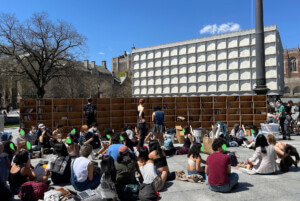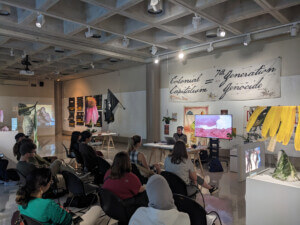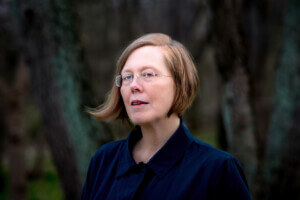It’s the start of the 2023–24 academic year, so that means a new crop of leaders are beginning the semester. To check in, AN spoke with a set of leading educators about their roles. Each answered a septet of questions; the seventh in this series is, Michael McClure, new dean of Kansas State’s College of Architecture, Planning & Design.
What are your goals and ambitions for your new role?
My immediate goals are to get to know the people, programs, and aspirations of the College better so that I can join the team already in place. That understanding of where we are and where we are going is the foundation for meaningful and impactful leadership. To envision a more vibrant future, we must start with a base understanding. My goal is to provide leadership that is collaborative, participatory, and visionary.
My ambitions for the College are that we work together to leverage our current success towards an even more vibrant future. I’m ready to fully engage with the University’s Next Generation Land Grant initiative. We will continue to work towards even more vibrant, inclusive, and socially involved design professions.
Who is someone who has inspired your work and leadership?
There is a long list of academic and professional leaders that I look to for inspiration, advice, and mentorship. The most immediate is H. Gordon Brooks.
Gordon is an incredible mentor and friend. He took a chance on a self-important architecture professor who had no real record in administration or in much else outside of teaching about and making buildings.
He trusted me
He supported me
He included me in every decision and every discussion.
He valued my opinion, even when we did not agree.
He let me make my own mistakes. Shielded me from any negative backlash and gave me full credit when I succeeded.
What are the most urgent topics and challenges for architectural education today?
In order to create an architecture curriculum for the 21st century we need to make connections between the studio and the streets, between the academy and the public, and encourage engagement with the world and its problems. We are optimistic and realistic. We are collaborative. We believe in a better future, and we are equipped to bring our visions into reality.
And this is why design professions are uniquely poised to be at the forefront of addressing the most pressing challenges facing society today.
At APDesign//K-State we understand that the best work is the result of inclusive, critical, and collaborative design processes that seek to solve problems and provide solutions to the communities we serve. Because we want our professions to be more relevant to society and to offer more robust solutions, we are committed to creating professions that represent the communities we are serving.
How has the COVID-19 pandemic changed your thinking about being a leader in higher education, if it has?
The COVID-19 pandemic has had an immense impact on society. Its effects on academia will be the subject for research and discussion for generations. In design education, it broke us out of some really bad habits, and as a leader, I am committed to remembering the lessons learned and to use what we have learned to improve design education. We should celebrate our teaching and learning methods, but we need to stop conflating longer hours working with excellence in outcomes. We need to stop confusing “rigor” with unhealthy habits and biased language.
Finally, as architects and designers, we need to make sure that we leverage the attention society now has to the physical and built environment. We should not squander the trust given to us as the leaders in shaping that environment.
How should the goals of diversity and inclusivity be advanced under your leadership?
Design is for everyone, and design education is for everyone. Because we want our professions to be more relevant to society and to offer more robust solutions, we are committed to creating professions that represent the communities we are serving. When we increase access to our professions and educational model, we create more pathways to overcome systemic inequalities. This in turn will bring more diverse, vibrant, and representative leaders into the professions.
The work to move towards more inclusive professions starts with us in the academy. We need to offer educational opportunities so that underrepresented youth understand our professions, see their impact, and see them as viable options for their future. We need to offer the services and support needed to retain the students that choose to enroll. We need to decolonize our curriculum. And urgently, we need to measure and critique our efforts.
What are you optimistic about as you create the future of architecture and architectural education?
The life of an architect, planner, and designer is a wonderful one. We get to make the world more beautiful, more meaningful, and more useful. Not only do we get to study an extremely wide range of issues, we get to make propositions on how to reframe, reimagine, and improve the world for all its inhabitants.
We don’t have to choose between the scientific method and the creative method. Almost always, our job is to consider “both an’’ in that way, we are inclusive by nature. We have to believe in a better future in order to envision it.
It is a privilege to get to engage with society as an architect, planner and designer.
It is a privilege to be able to guide and mentor the next generation of creative leaders.











